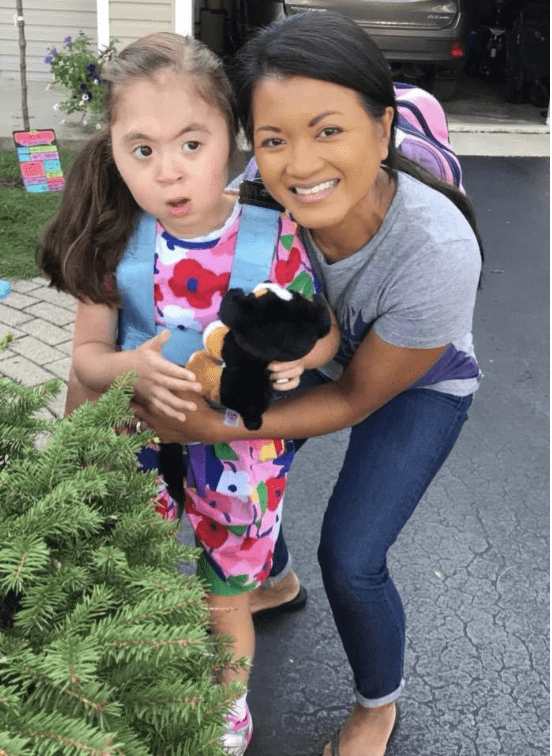How to Talk to Your Typically Developing Child About Kids With Disabilities
One day, while enjoying a beautiful day at the playground with my young children, a unique family came to play. This family consisted of a mom, dad, and three children. The dad rolled up in a wheelchair, and two of the three children were using walkers for mobility. Nearby, another little boy, around four years old, started pointing at the unfamiliar equipment and asking his mother some questions. I could see that she felt embarrassed, and she quickly redirected her son’s attention elsewhere. The family clearly noticed, and it created an awkward, slightly uncomfortable atmosphere. It became the “elephant in the room.” Since his mother ushered him away, the little boy became even more intrigued, and he continued to stare and inquire.
As a child of the 80s and 90s, I was taught that everyone is equal, and we should treat everyone the same and ignore children’s differences. That said, I can’t help but feel that this has created a generation of parents that nowadays struggle to talk to their own children about children with disabilities. Some parents feel uncomfortable and even avoid people with disabilities, because they would be mortified if their child pointed, stared, and audibly asked questions. The interesting thing is, many of the special families that I encounter as a physical therapist would prefer that children (and adults) ask questions. Sure, it’s tiring answering the same questions, but it’s preferred over the awkward silence and continued stares.
When my own son noticed this same family a few minutes later, he piped up as well. He pointed at the dad’s wheelchair and said, loudly, “Why is he using that wheelchair?” Then, before I could even answer the first question, he pointed to the children and asked, “What are those things for?”
After a deep breath, I decided to take a different approach. I suggested that we go play with them a bit, and then perhaps he can learn more about these potential buddies. My goal was to teach my son that it is ok to ask questions, but that we should ask questions in the context of relationship building, rather than demanding personal information from a stranger.
My son started interacting with this family. The boys immediately were ecstatic to learn that they were both 5 years old. Then, a beautiful thing happened – after a few minutes, my son asked one of the children why he used “that walking thing.” The boy told my son that it’s called a “walker,” that he got to pick the color (green), and then he asked my son if he would like to see how fast he can run with it. At one point, my son asked if he could try the walker, and I could see that they boy was hesitant. I interjected here. I felt it necessary to tell my son that his walker is not a toy and that it is personal, expensive, and necessary for his new friend to get around. The boys shrugged it off, and the two of them took off to play on their own as children do. After this interaction, their differences became insignificant and they just played. No elephant in the room, no awkward silences, just play. And to top it all off, the first little boy eventually joined in and played as well.
We should always ask questions that foster understanding, awareness and acceptance of people with disabilities. If we usher our children away, disabilities become taboo in their little minds, and this fosters confusion and even fear. Here are some things to remember:
- Being different isn’t bad. Kids with disabilities ARE different, and it’s ok to notice.
- Kids with disabilities are also the SAME as other kids: they like to play, they have the same feelings, they have favorite toys, they want friends, and they have families.
- Kids with disabilities are different, but that doesn’t mean they are sick or something is wrong. Instead of saying, “Something is wrong with his brain and it makes it difficult for him to walk,” say, “His brain works differently than yours, so his legs work differently as well. That walker helps him move around.”
- It’s ok to ask questions to the child, but be aware that the child might be verbally or developmentally delayed. In this case, encourage dialogue with the child’s parents as well.
- When your child asks questions, encourage them to also ask questions that are not related to the child’s disability. Teach your child to ask about the child’s favorite toy and what they like to do for fun, just like they would interact with their typically developing peers.
- Look for resources that help normalize disabilities for your child. Seek books and TV shows that feature children with disabilities.
- Model interactions for your child. Say “hi” to kids with disabilities and talk to their parents, just as you would with any other family.
- Teach your children that medical devices and adaptive communication devices aren’t toys and they are not to be played with. They are very expensive, and if they were to break, the child would not be able to walk or talk without them.
In summary, treat all children as you would want your own child treated. Once you are able to normalize children and all people with disabilities for your child, the elephant in the room will be gone, and then we can just let kids be kids.

Special thanks to Sophal and Lili.
Blog by Cyndi Stedman
